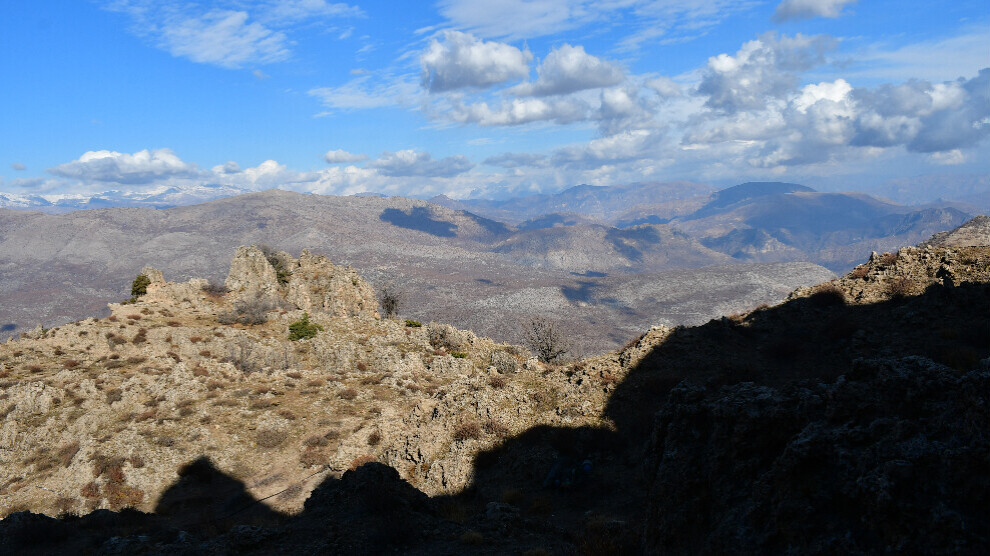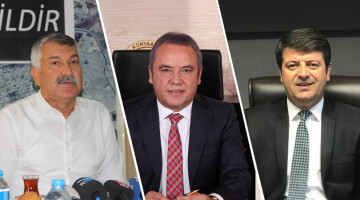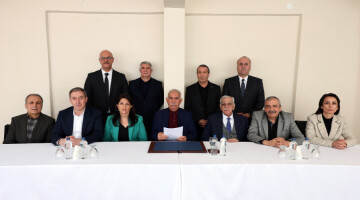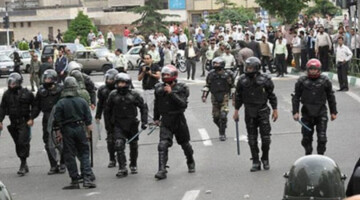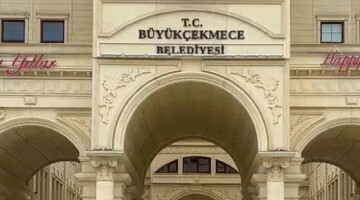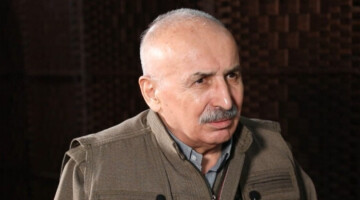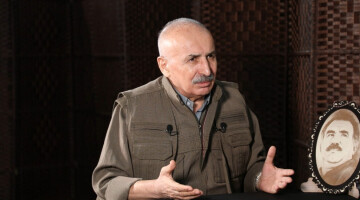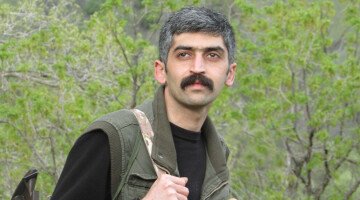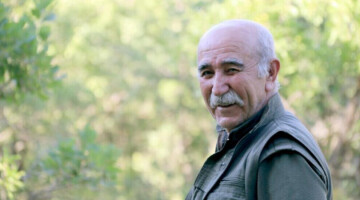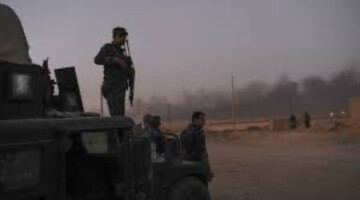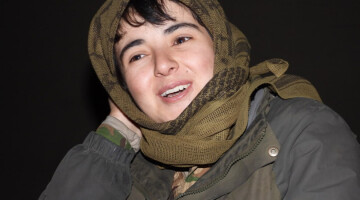This article was written while a guerrilla was talking. The words spoke themselves and this article wrote itself as I stared at the magnificent Kurojahro standing before me, lost in the whiteness of the fog. At that time, the only wish I read in their minds was “Let the fog disperse, let the guerrilla rise above it, let the guerrilla rise above it so that the sun rises at the crack of dawn”.
A guerrilla is telling how greatly his comrades fought and resisted. As guerrilla Devrim starts to tell of Kurojahro, his eyes gaze into the mountain’s chains where guerrillas frequent all over. The narrative of guerrilla Devrim reminds me of the Turkish military offensive dubbed “Operation Hammer” in 1997. Two Turkish helicopters were shot down, nearly 200 Turkish soldiers were killed and 338 were injured during the operation. I was four when it was carried out. I knew neither guerrillas nor war. I had no clue about fascism and humans. When I was four years old, living in a secluded place, four guerrillas took action to strike the Turkish soldiers in Kurojahro, where the invaders infiltrated in 1997 thanks to the betrayal of the KDP.
Maybe you wouldn't believe it if they told you when you were four years old, but when you see the creativity and resistance of the guerrillas in the mountains, it becomes indeed convincing. Now again Kurojahro, an invading army, betrayal of the KDP devoid of any sense of honour, and again the guerrillas. The freedom guerrillas of Kurdistan, who have modernized guerrilla warfare, add creativity and passion to their tactics. And the Kurojahro resistance, which is a genuine fight.
Kurojahro is the most dominant mountain of Zap about which everyone has written, told, said and felt something. It is a mountain where guerrillas are positioned in every part of its chain. Freedom fighters spell it as 'Kurojahro', but it is known as 'Kurê Jaro'. Guerrillas give names to many mountains with their own words because of the living conditions and feelings there. They give names based on their own common mind and feelings. The mountain is known as “Link Mountain”. In the south, are located the towns of Derelok, Şêladizê and Suri; in the north, there is the Şoreş Hill, next to Şikefta Birîndara; the Barzan district is found in its east; and in the west, there is the Zap (Zê) water, which very sharply separates it from Bahar Hill. It is a mountain of strategic importance. It is a mountain which is quite high, wide, bare and rocky, large at its summit and with very little water only in certain parts.
The guerrillas say that guerrilla activity here is both very difficult and requires tremendous endurance. Only “a pair of mekap (guerrilla shoes) and the patience of the guerrillas” can endure Kurojahro. That's why a guerrilla who stays there has a will of steel with a busy pace and a heart that fits the whole world into its heart. There are barely any trees at its peak. Water is obtained by melting snow. That's why only a guerrilla can know the taste of drinking tea there. Guerrilla Mizgîn Ronahî, who was martyred together with Rûmet Kobanê in Kurojahro, once said that “a guerrilla is like a gazelle. How could the Turkish soldiers ever know how to walk here?”
Kurojahro has now turned into an area of resistance. Mizgîn Ronahî, Mizgîn Botan, Navdar Mazî, Rêdûr Kobanê and Rûmet Kobanê were all martyred there. Kurojahro is resisting. It is resisting against the invaders who keep bombing its nature and soil. Every ululation turns into a cry, every song turns into a rebellion, and every action turns into a victory.

